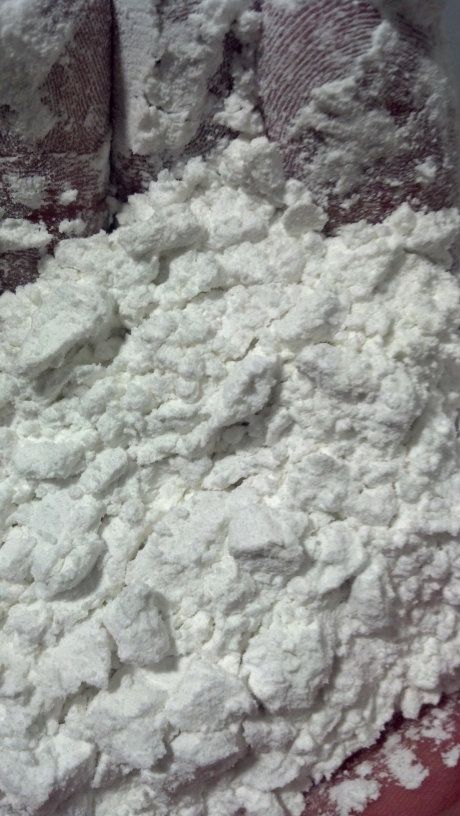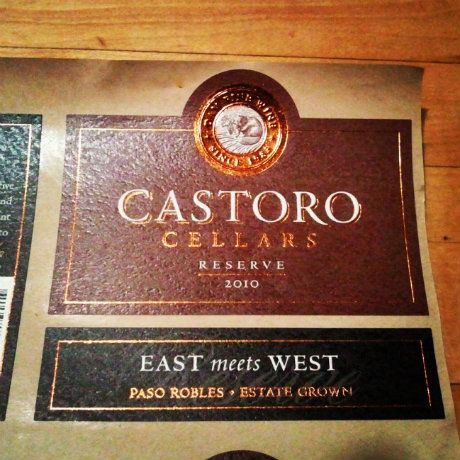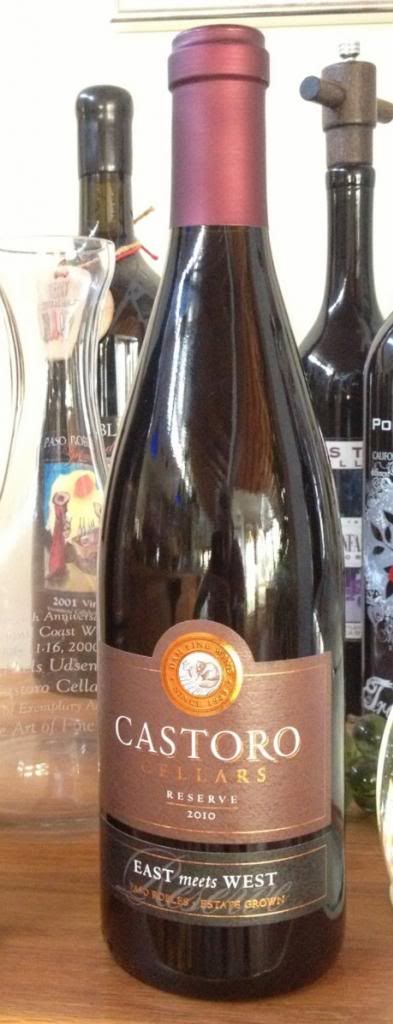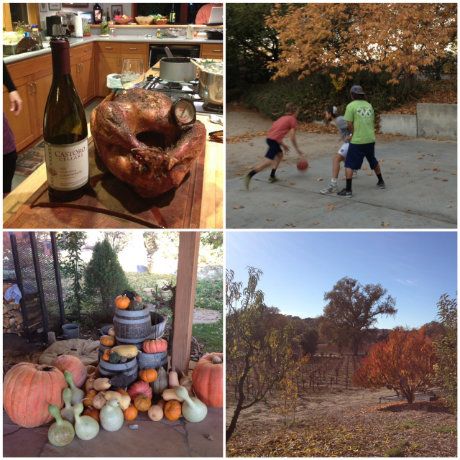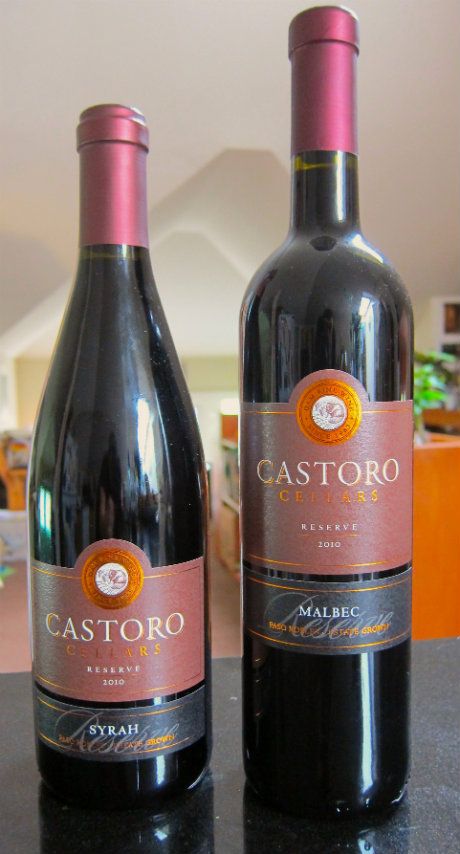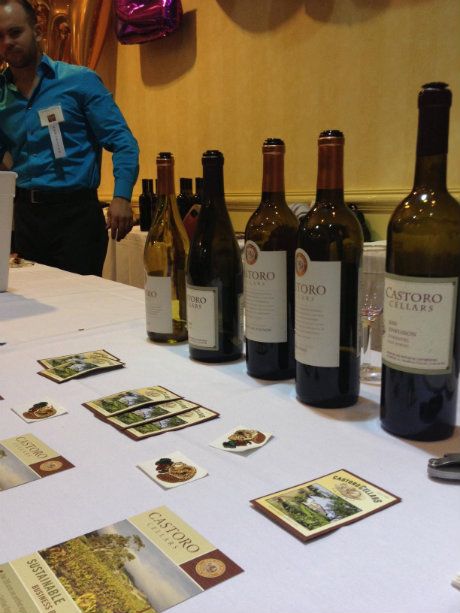November 18, 2012
5…4…3…2…1…GRAPES OFF! We are just a few days away from picking the very last grapes of the season and the final batches have been some of the best. Grapes finally came flowing in from our west side Paso CCOF organic Whale rock and Cobble Creek Vineyards. These grapes include small lots of our reserve Zinfandel, Carignane, Charbono, Syrah, Tempranillo and Primitivo varietals. The Cabernet Sauvignon and a very little amount of Zinfandel is all that we have left. Tom says the Carignane and Tempranillo look especially exceptional this year. The Tempranillo should make for a mouthwatering smooth, dry and spice filled wine with hints of black licorice. The Carignane is always an interesting grape coming in very ripe this year, high in sugar content and geared to make a big, tongue awakening masterpiece that will rock your taste buds.
As the vines begin to shed their leaves and turn various shades of orange, yellow and red, the cellar work goes through a slight change as well. There are fewer and fewer grapes to crush and this means less digging and more additions and racking. In my last blog I talked about the intricacies of draining and digging tanks filled with red wine. In this blog I’m going to focus on techniques and additions that are usually only involved in the white wine making process. Sounds kind of boring, but I promise I won’t make you fall asleep, I am not your college chemistry professor with a uni-brow he won’t pluck.
You probably didn’t know that in order to keep white wine from becoming cloudy and murky when exposed to excess heat we actually add dirt. Well, not exactly dirt, but a substance called bentonite. Bentonite is an extremely absorbent substance made up of small positively charged clay particles. When added to hot water and allowed to sit overnight, the substance will turn into a slurry which will then be poured into the wine from the top. As it sinks down the slurry acts as a net attracting all excess negatively charged proteins within the wine like a magnet. These proteins include yeast skins and various other particles that are floating around, and if left untouched excess heat will cause them to denature or puff up just like tiny little eggs. These little puffs like I mentioned before will cause the wine to look cloudy and then the wine cannot be sold. You can still drink it though and it won’t hurt you. Once it passes through the wine, the bentonite will settle at the bottom of the tank and the wine can be racked off the top leaving the color, texture and flavor of the wine completely unaffected.
Now it’s time to get cold, really cold, I mean below freezing in order to cold stabilize the wine. If you have ever freaked out because you thought you found glass coming out of the bottom of a cork that’s because the wine didn’t go through cold stabilization. It wasn’t glass you saw though; it was actually little tartaric crystals that form when tartaric acid in wine is exposed to cold temperatures. First, the tank is cooled down to around 30° F to initiate the crystallization process. To better describe the next step, you can actually do it yourself by placing a Corona or any other bottled beer in the freezer. If it doesn’t move around or get hit by something else while chilling take it out and tap it on the counter. The force of the tap will cause the water in the beer to crystalize slowly throughout the bottle. This is the same basic process we use to remove the tartaric crystals, but instead of tapping the tank, we add already naturally formed crystals in the form of powder called Cream of Tartar. The introduction of this powder starts the chemical reaction and causes the crystals to form, sinking to the bottom or sticking to the sides of the tank. The wine is then racked off the top, while once again the taste, texture and color of the wine are completely unaffected.
It may seem like a lot of science, but the art of wine making is linked hand in hand with the use of science and chemical reactions to reach a final product that will be enjoyed by all. It is impossible to avoid chemistry in the winemaking process whether you are creating alcohol, fining the wine or extracting color and aromas from grapes.
That’s all for now, so until next time, thanks for reading,
Erik
Bentonite
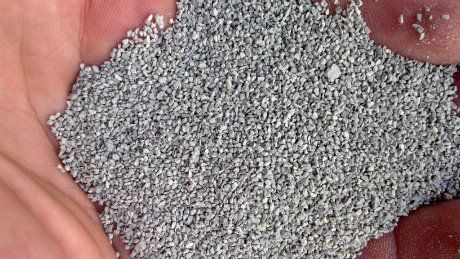
Cream of Tartar
